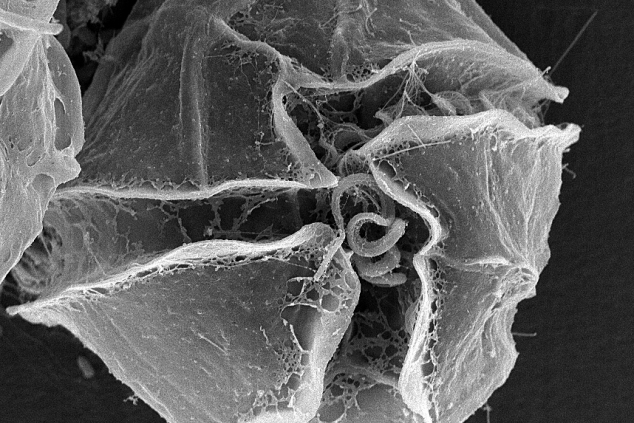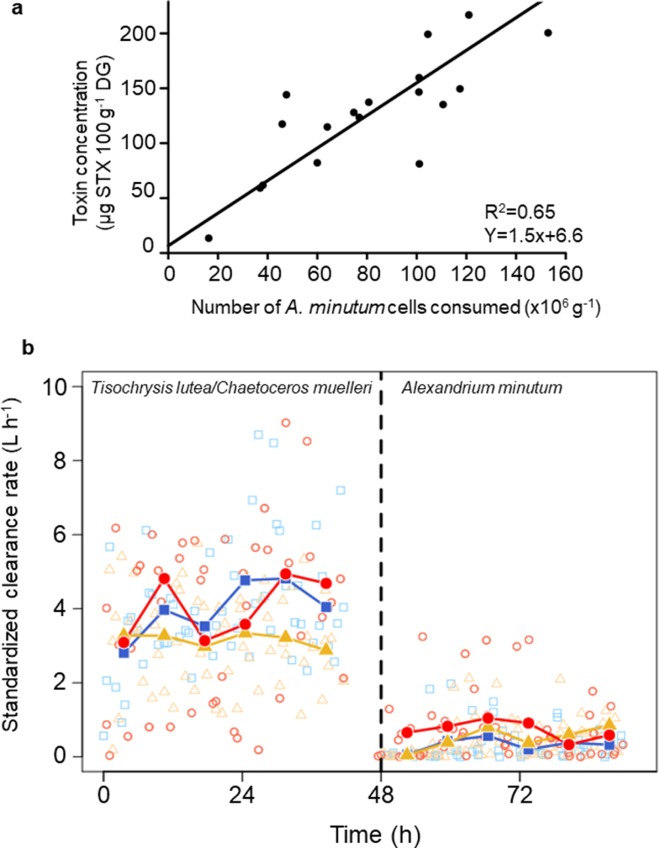Immune defense response of the king scallop
Physiological and comparative proteomic analyzes reveal immune defense response of the king scallop Pecten maximus in presence of paralytic shellfish toxin (PST) from Alexandrium minutum
Abstract
The king scallop, Pecten maximus is a highly valuable seafood in Europe. Over the last few years, its culture has been threatened by toxic microalgae during harmful algal blooms, inducing public health concerns. Indeed, phycotoxins accumulated in bivalves can be harmful for human, especially paralytic shellfish toxins (PST) synthesized by the microalgae Alexandrium minutum. Deleterious effects of these toxic algae on bivalves have also been reported. However, its impact on bivalves such as king scallop is far from being completely understood. This study combined ecophysiological and proteomic analyzes to investigate the early response of juvenile king scallops to a short term exposure to PST producing A. minutum. Our data showed that all along the 2-days exposure to A. minutum, king scallops exhibited transient lower filtration and respiration rates and accumulated PST. Significant inter-individual variability of toxin accumulation potential was observed among individuals. Furthermore, we found that ingestion of toxic algae, correlated to toxin accumulation was driven by two factors: 1/ the time it takes king scallop to recover from filtration inhibition and starts to filtrate again, 2/ the filtration level to which king scallop starts again to filtrate after inhibition. Furthermore, at the end of the 2-day exposure to A. minutum, proteomic analyzes revealed an increase of the killer cell lectin-like receptor B1, involved in adaptative immune response. Proteins involved in detoxification and in metabolism were found in lower amount in A. minutum exposed king scallops. Proteomic data also showed differential accumulation in several structure proteins such as β-actin, paramyosin and filamin A, suggesting a remodeling of the mantle tissue when king scallops are subjected to an A. minutum exposure.
Toxin accumulation linked to feeding behavior. (a). Individual toxin concentration in scallop digestive gland (DG) at the end of the exposure (day 4, μg STX 100 g−1 DG) against the total numbers of A. minutum cells consumed for each scallop on days 3&4 per g of scallop (number of cells g−1) for all assays (n=18). The line indicates the adjusted type II regression model. (b). Graph shows clearance rates (L h−1) from TC-A assays (days 1&2 exposition to T. lutea and C. muelleri and days 3&4 exposition to A. minutum) measured from day 1 to day 4 and standardized for a 7g scallop in total mass. Data have been highlighted according to the 3 clusters (low, medium and high accumulation potential), each empty shape representing an individual from the low □, mean △ or high ○ accumulation cluster and filled shapes corresponding to the average values for 5h from the low ■, mean ▲ and high ●.
Highlights
- Harmful microalgae A. minutum transiently inhibits king scallop filtration and respiration activities.
- The A. minutum paralytic shellfish toxin accumulation in king scallop is highly variable between individuals.
- Proteomic analysis of toxic algae A. minutum effect on king scallop: immune response and detoxication.

 (c) Gert Hansen - Licensed under a Creative Commons Attribution-Noncommercial-Share Alike 4.0 License
(c) Gert Hansen - Licensed under a Creative Commons Attribution-Noncommercial-Share Alike 4.0 License





